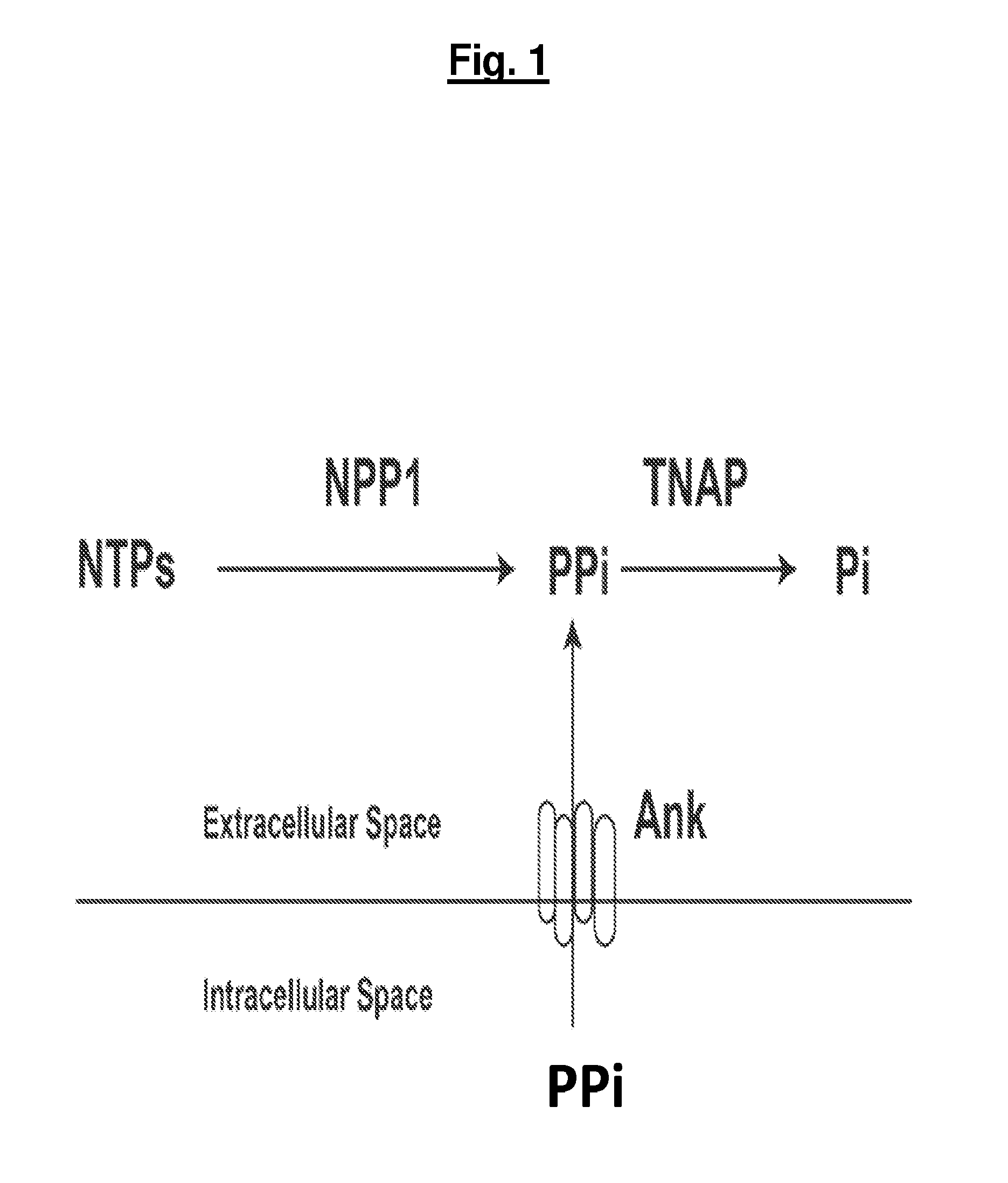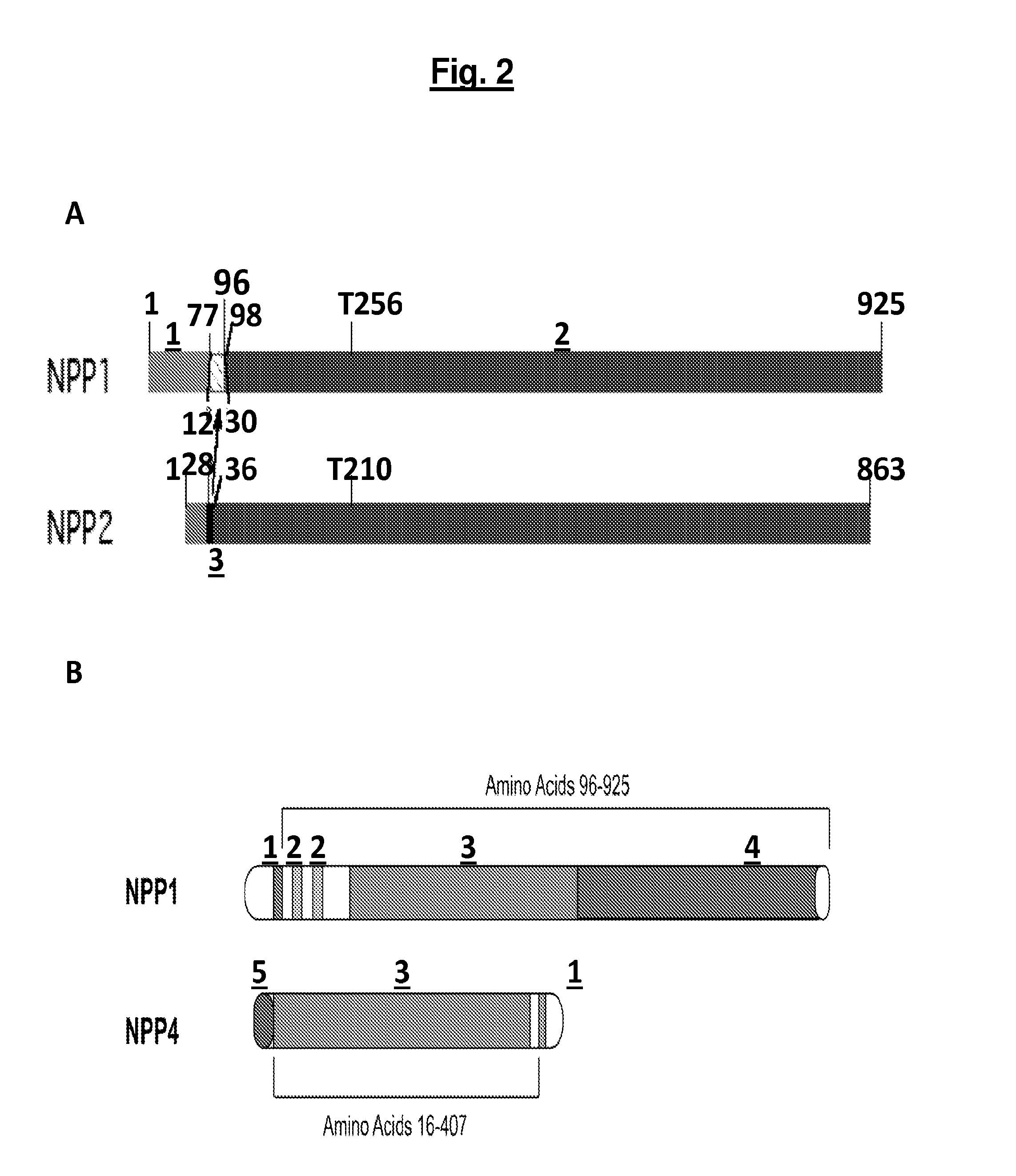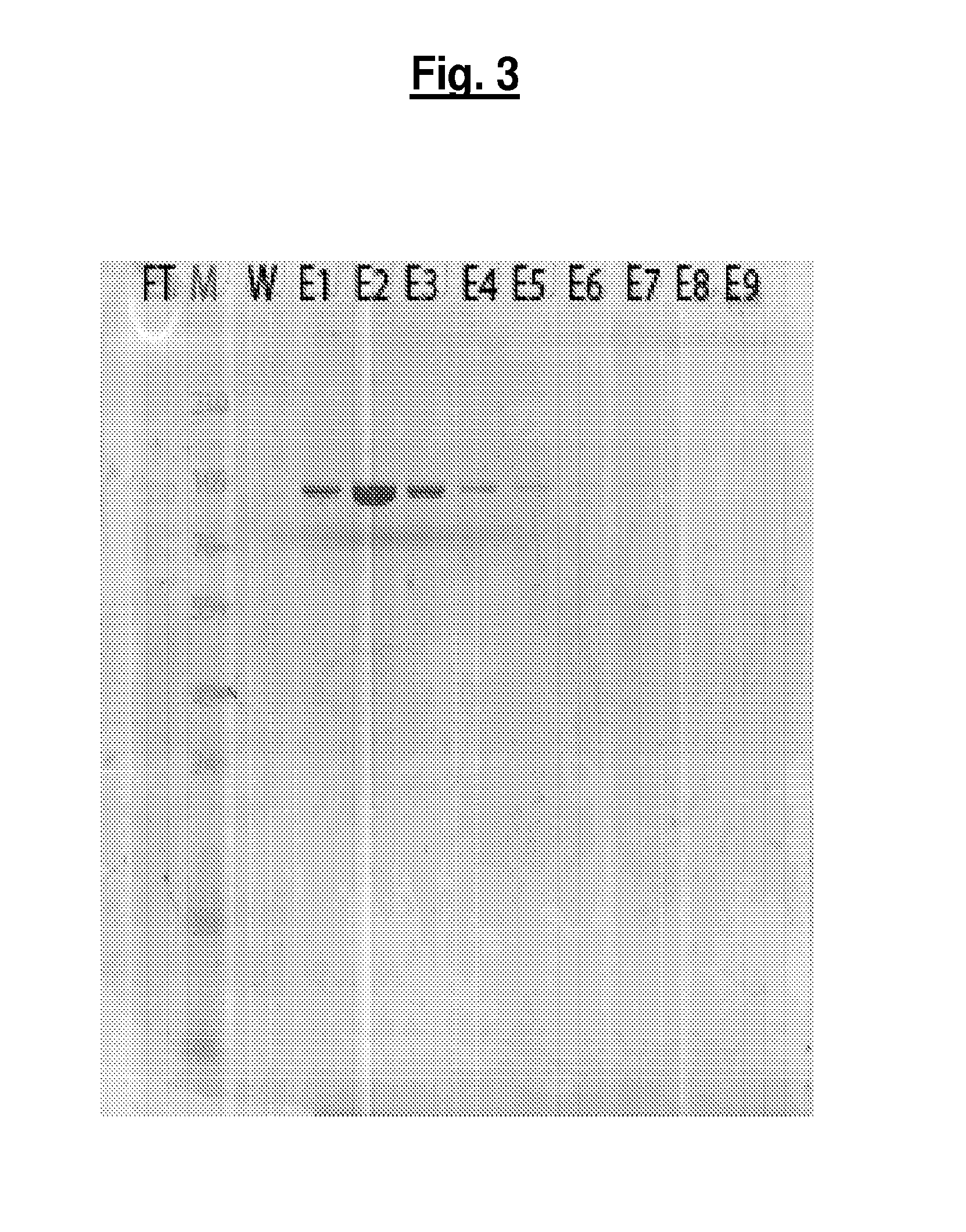Compositions and methods for treating pathological calcification and ossification
a technology of pathological calcification and ossification, applied in the direction of drug composition, peptide, peptide/protein ingredient, etc., can solve the problems of hampered study and characterization, and achieve the effects of increasing the atp hydrolytic activity, increasing the npp1-like hydrolytic activity, and increasing the substrate selectivity of mutant npp4
- Summary
- Abstract
- Description
- Claims
- Application Information
AI Technical Summary
Benefits of technology
Problems solved by technology
Method used
Image
Examples
example 1
Enzyme Replacement Therapy for Idiopathic Infantile Arterial Calcification (IIAC) and Ossification of the Posterior Longitudinal Ligament (OPLL)
[0181]As described herein, a soluble form of the nucleotide pyrophosphatase / phosphodiesterase-1 (NPP-1) and mutant NPP-4 has been developed, which can be a useful therapeutic for diseases and disorders involving pathological calcification and / or ossification. Also described herein is a direct demonstration of the physiologic activity of the enzyme in disease states of NPP1 dysfunction, thereby establishing the utility of NPP1 enzyme replacement therapy in select disorders of ectopic calcification.
[0182]To develop a soluble form of NPP1, the sequences of NPP2 were combined with the sequences of NPP1 to obtain a soluble, secreted NPP1 protein. It was discovered that soluble, active, recombinant NPP1 could be produced by swapping the membrane-spanning domain of NPP2 into the homologous region of NPP1. Using such a construct, some variant forms ...
example 2
Substrate Discrimination of NPP4 vs. NPP1
[0190]To determine the extent of substrate discrimination exhibited by highly homologous NPP family members, the steady state enzymatic rate of human NPP4 and NPP1 for their putative in vivo substrates, Ap3A and ATP, respectively, was measured (FIG. 5). Human NPP4 shares 40% sequence identity with NPP1 throughout the catalytic domain, and the structure of mouse NPP1 has been determined (Jansen et al., 2012, Structure 20:1948-1959), providing the opportunity to identify the structural origins of substrate discrimination at the atomic level. Human and mouse NPP1 are 79% identical, with sequence mapping of the human sequence onto the mouse NPP1 structure showing that all sequence differences are outside the substrate binding and active sites. NPP4 and NPP1 hydrolyze Ap3A with comparable maximum turnover numbers (kcat˜7-8 s−1), although the Michaelis constant of NPP1 is >30 times tighter than that of NPP4. In contrast, the rate at which NPP4 hydr...
example 3
Structural Overview
[0191]In order to understand the molecular basis of NPP4 substrate specificity and to achieve detailed insights regarding its similarities and differences relative to NPP1, X-ray crystallography was utilized to determine the high-resolution three-dimensional structures of human NPP4 in both apo and AMP-bound forms, at 1.50 Å and 1.54 Å resolution, respectively (Table 1 and FIG. 6A). These were then compared to recently determined structures of mouse NPP1 complexes, including mNPP1-AMP at 2.70 Å resolution, in order to define structural features responsible for the observed substrate specificities of each. The bimetallo catalytic domains of NPP4 and NPP1 contain two bound zinc ions, and share a similar overall fold and employ a conserved catalytic mechanism to hydrolyze at the same position on substrates, resulting in a nucleotide monophosphate product. Hydrolysis of Ap3A or ATP by either of these enzymes yields an AMP product molecule. Accordingly, hNPP4-AMP and m...
PUM
| Property | Measurement | Unit |
|---|---|---|
| Solubility (mass) | aaaaa | aaaaa |
| Acidity | aaaaa | aaaaa |
| Selectivity | aaaaa | aaaaa |
Abstract
Description
Claims
Application Information
 Login to View More
Login to View More - R&D
- Intellectual Property
- Life Sciences
- Materials
- Tech Scout
- Unparalleled Data Quality
- Higher Quality Content
- 60% Fewer Hallucinations
Browse by: Latest US Patents, China's latest patents, Technical Efficacy Thesaurus, Application Domain, Technology Topic, Popular Technical Reports.
© 2025 PatSnap. All rights reserved.Legal|Privacy policy|Modern Slavery Act Transparency Statement|Sitemap|About US| Contact US: help@patsnap.com



